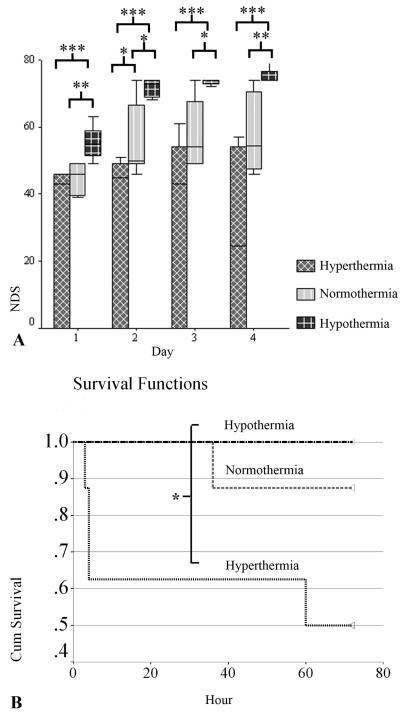Figure 2.
Outcomes by temperature manipulation groups measured by Neurological Deficit Score (NDS) (median [interquartile range]) (A) and survival (B). A significant difference in NDS was noted during the 72-hr experiment after asphyxial cardiac arrest (CA) between hypothermia and normothermia (p<.001) and between normothermia and hyperthermia (p=.001) groups. Significant differences existed in all periods between hypothermia and normothermia and at 2 days post-CA between normothermia and hyperthermia groups. The hypothermia group had a better survival rate and mean survival duration than the hyperthermia group. (*p< .05, **p< .01, ***p< .001)

